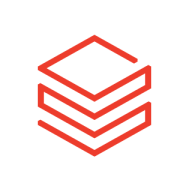

Find out what your peers are saying about Snowflake Computing, Microsoft, Google and others in Cloud Data Warehouse.
For a lot of different tasks, including machine learning, it is a nice solution.
When it comes to big data processing, I prefer Databricks over other solutions.
Whenever we reach out, they respond promptly.
As of now, we are raising issues and they are providing solutions without any problems.
I rate the technical support as fine because they have levels of technical support available, especially partners who get really good support from Databricks on new features.
Having a local partner was crucial for us while they were there.
TIBCO's support, especially for integration products, is swift.
The patches have sometimes caused issues leading to our jobs being paused for about six hours.
Databricks is an easily scalable platform.
I would rate the scalability of this solution as very high, about nine out of ten.
They release patches that sometimes break our code.
Although it is too early to definitively state the platform's stability, we have not encountered any issues so far.
Databricks is definitely a very stable product and reliable.
There are no significant stability issues as long as the product's capabilities are understood and not overly pushed.
Adjusting features like worker nodes and node utilization during cluster creation could mitigate these failures.
We prefer using a small to mid-sized cluster for many jobs to keep costs low, but this sometimes doesn't support our operations properly.
We use MLflow for managing MLOps, however, further improvement would be beneficial, especially for large language models and related tools.
TIBCO Spotfire and ClickView need improvement in scheduling, which is critical yet lacking in quality.
It could be very useful if the coding part of using the platform could be more user-friendly in terms of visual capability.
It is not a cheap solution.
TIBCO Spotfire's pricing is high, particularly in traditional markets like Turkey, impacting market penetration.
Databricks' capability to process data in parallel enhances data processing speed.
The platform allows us to leverage cloud advantages effectively, enhancing our AI and ML projects.
The Unity Catalog is for data governance, and the Delta Lake is to build the lakehouse.
TIBCO Spotfire integrates with R and Python, offering a differentiator from the competition.
I think having Python included is a big win because you get the chance to customize your algorithm and your in-house development without having a big dependency on a third party.
| Product | Market Share (%) |
|---|---|
| Databricks | 8.3% |
| Snowflake | 17.7% |
| Dremio | 8.9% |
| Other | 65.1% |
| Product | Market Share (%) |
|---|---|
| TIBCO Spotfire | 1.1% |
| Microsoft Power BI | 14.1% |
| Tableau Enterprise | 10.3% |
| Other | 74.5% |


| Company Size | Count |
|---|---|
| Small Business | 25 |
| Midsize Enterprise | 12 |
| Large Enterprise | 56 |
| Company Size | Count |
|---|---|
| Small Business | 18 |
| Midsize Enterprise | 12 |
| Large Enterprise | 39 |
Databricks offers a scalable, versatile platform that integrates seamlessly with Spark and multiple languages, supporting data engineering, machine learning, and analytics in a unified environment.
Databricks stands out for its scalability, ease of use, and powerful integration with Spark, multiple languages, and leading cloud services like Azure and AWS. It provides tools such as the Notebook for collaboration, Delta Lake for efficient data management, and Unity Catalog for data governance. While enhancing data engineering and machine learning workflows, it faces challenges in visualization and third-party integration, with pricing and user interface navigation being common concerns. Despite needing improvements in connectivity and documentation, it remains popular for tasks like real-time processing and data pipeline management.
What features make Databricks unique?In the tech industry, Databricks empowers teams to perform comprehensive data analytics, enabling them to conduct extensive ETL operations, run predictive modeling, and prepare data for SparkML. In retail, it supports real-time data processing and batch streaming, aiding in better decision-making. Enterprises across sectors leverage its capabilities for creating secure APIs and managing data lakes effectively.
TIBCO Spotfire is a versatile data analytics platform that can handle large datasets and be deployed on-premise or in the cloud. Its dynamic reporting, easy creation of dynamic dashboards, and highly customizable tool make it a valuable asset for process data analysis, industrial performance dashboards, problem root cause analysis, business intelligence, and real-time analytics for IoT devices in the energy sector.
The solution also offers data science functions, map visuals, R and Python integration, and the ability to write HTML and JavaScript text areas. Spotfire has helped organizations deliver projects more efficiently and cost-effectively, allowing for faster data analysis.
We monitor all Cloud Data Warehouse reviews to prevent fraudulent reviews and keep review quality high. We do not post reviews by company employees or direct competitors. We validate each review for authenticity via cross-reference with LinkedIn, and personal follow-up with the reviewer when necessary.